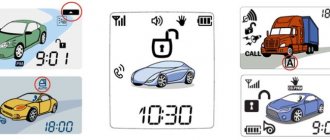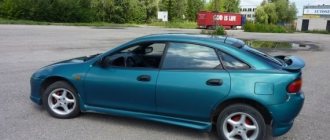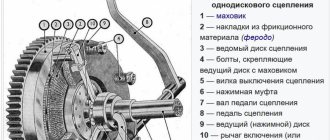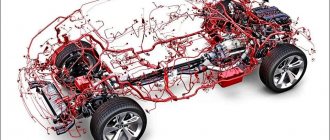Every driver, even with little driving experience, is familiar with the rule of the right hand or the obstacle that occurs on the right side. This rule from the traffic rules is given an important place; moreover, the obstacle on the right is even considered the main postulate on the road.
When observing this canon, controversial issues may arise that a novice driver may not be aware of. We have taken the liberty of telling everything that has to do with this type of obstacle. At the end of this conversation, you will have no doubts regarding actions regarding other road users in unregulated areas.
Definition of the concept
First, we need to understand the concept of “interference on the right.” This information will allow you to clearly understand the essence of the further conversation and not confuse this rule with other concepts from the traffic rules. This concept is relevant on those sections of the road that are not equipped with regulatory signs.
The interference on the right quotes paragraph from the traffic rules numbered 8.9. The essence of this point boils down to the following: the absence of any regulated form, which is aimed at regulating the sequence of vehicle passage, provides for drivers to pass, taking into account the presence of obstacles on the right side. You need to clearly understand that the car that acts as that very obstacle on the right must be allowed through. Only after this can you start moving, provided there are no other cars on the right side.
Now let's deal with an equally important question, which often becomes a stumbling block - how to determine the interference on the right. When approaching a section of the road that is not equipped with regulatory signs, you must ensure that they are completely absent. Standing at a fork, pay attention to the vehicles that are on the right side relative to your car. Such road users will be considered an obstacle that must be given the right to travel.
If the lines of movement (yours and the car on the right) coincide, you will have to give way and wait for the other car to complete the maneuver. Only if there are no cars on the right side can you continue driving.
We have figured out what the interference on the right means and in theory everything seems to be clear. In practice, a number of controversial situations arise that can confuse. These situations need to be studied in detail so that problems do not arise on the road.
Orientation in the yard
The traffic rules rule “obstacle on the right” in the courtyard of an apartment building must also be observed if we are talking about traffic participants with the same status. All movements of vehicles and pedestrians in these territories are regulated by paragraph 17 of the traffic rules. Subsection 17.3 states:
When leaving a residential area, drivers must give way to other road users.
But who can go first and who must wait, if the cars are coming from the yard at the same time, is not regulated by any other rule or sign. This means that clause 8.9 applies. The one to whom the opponent approaches from the right must concede.
This does not apply to pedestrians. Their cars, leaving the yard, must be allowed through in any case.
Examples of possible interference on the right
It's time to figure out how interference on the right works in practice. We have collected some subtleties and exceptions:
- when leaving a dirt road, the car is not mistaken for an obstacle that must be passed, this type of road is always considered secondary;
- the turned on turn does not play any significance and does not affect the situation that develops on the road; regardless of the turn, the car must be allowed to pass.
Next we will study common situations in which the validity of the rule seems controversial. You must know who must give way, for example, at an intersection or when changing lanes. If you correctly apply this information in practice, you will be able to avoid emergency situations and unpleasant consequences.
Important Tips
People moving along an additional route or leaving a residential yard must give way to everyone.
It is advisable to first establish visual interaction with the driver moving on the left side.
In this case, it will be clear what his subsequent manipulations will be. This is not a special universal rule, it is simply a way to show drivers your intention.
If the driver does not react at all, if the speed of his car does not decrease, you must definitely let him pass.
Particularly unbalanced drivers try to teach such stubborn people a lesson and drive directly. You shouldn't do that. This will lead to an emergency. You shouldn’t waste your nerves, time and health trying to prove something.
Problems at intersections
Obstruction on the right at an intersection is a common situation that a driver can encounter several times a day. It is imperative to know the rules for crossing uncontrolled intersections. This knowledge will help you navigate the road freely, not create problems for other road users and avoid accidents.
At intersections, the right-hand rule works as follows: if drivers have equal opportunities, they need to let through vehicles that are on the right side. The difficulty is associated with the dynamics of traffic, which is typical for large cities with a lot of transport. There are situations when this rule does not apply. We'll talk about them further.
Driving on uneven roads
Paragraph 13.10 of the traffic rules talks about the standards for passing unequal intersections. This rule states that when the main road at an intersection changes direction, drivers traveling along the main road are guided by the rules for crossing intersections of equivalent roads. The same standards apply to drivers driving on secondary roads.
If the main road changes direction, then traffic is regulated by the “Interference on the right” rule. The same rule applies to traffic if the following signs are installed: “Main road”, “Driving without stopping is prohibited”, “Give way”.
Changing lanes
No less controversial situations arise when changing lanes on a multi-lane road. A car is not always mistaken for an obstacle on the right when changing lanes. If we turn to the traffic rules, we will see the following interpretation: when performing a lane change maneuver, the driver is obliged to provide the opportunity for passage to those vehicles that are moving in the same direction and do not change direction. If two vehicles that are moving in parallel relative to each other simultaneously make a maneuver to change lanes, then priority should be given to the car located on the right side.
Equivalent road
Paragraph 13.11 of the traffic rules for uncontrolled intersections states that drivers of trackless vehicles are required to give way to mechanical vehicles approaching from the right. This traffic rule “Interference on the right” is applicable only at unregulated intersections (crossroads) of equivalent roads. This concept includes all intersections where there are no traffic controllers, traffic lights, or the latter do not work.
An intersection is considered equivalent in the following cases:
- The sign “Intersection of equivalent roads” has been installed.
- The sign “End of the main road” has been installed.
- There are no priority signs before the intersection, and intersecting roads have identical surfaces. An example would be intersections without signs for field roads or asphalt roads.
In cases where the intersection is unregulated and equal, then the traffic rules “Interference on the right” apply.
Where does the right hand rule not apply?
This rule does not always apply. There are a number of situations in which the right-hand rule loses its validity. All of them are described below:
- different statuses of road users;
- This rule does not apply to rail transport; it is always allowed through;
- unequal priorities regarding the positions of the participants, which falls under the regulation of signs, traffic lights or traffic controllers;
- starting to move or reverse;
- following an additional traffic light sign;
- when entering the bridge, the driver allows cars that are already moving along it to pass; in this case, the transport is not perceived as an obstacle.
We managed to consider a lot of things, including in what cases this rule does not apply. This information is not only required to be studied, it must be remembered and never forgotten. It should be stored in your head, and the principles of following the rule should be carried out automatically. In this case, you will never be the culprit of an accident; it can only happen because of another ignorant driver. It’s not for nothing that an obstacle on the right is considered the main rule in traffic rules.
Penalty for violating the “third hand” rule
The table of penalties literally does not contain an article for violating the “interference on the right” rule. But if the requirement to cede the right of priority passage in accordance with the “Interference on the right” rule is not met, certain articles of the Code of Administrative Offenses come into force:
- Article 12.13, part 2 – if the violation occurred at an intersection, the penalty is a fine of 1000 rubles;
- Art. 12.14.h. 3 – violation of the rules of priority travel, with the exception of Art. 12.13 p.m. 3 and 12.17 of the Code of Administrative Offences, as punishment a verbal warning is issued or a fine of 500 rubles is issued;
- Art. 12.17 – it talks about not granting the right of way to a route vehicle or a car with flashing lights on, special. sound signal (siren), external color schemes, here a fine of 500 to 3,000 rubles is issued, or deprivation of the right to drive for 1-3 months, depending on the complexity of the case.
Thus, in the APN protocol, the traffic police inspector will indicate a violation of a specific clause and issue a fine under the appropriate clause of the Code of Administrative Offenses for failure to comply with the requirement to provide priority travel.
The “Interference on the right” rule applies only in cases where the case does not fit within the framework described in the traffic rules.
Examples of situations
If we talk about such a feature as “interference on the right”, traffic rules dictate the behavior of motorists in the following circumstances:
- At an uncontrolled intersection of equal roads, car V is driving straight ahead, and D is to the right of it and is about to turn. If he needs to turn right, both cars can move apart along non-intersecting trajectories. In the absence of such an opportunity, V must yield. You will definitely have to let car D pass when it turns left (the paths will definitely intersect) or also goes straight.
- V and D were driving towards each other. The first one needs to turn left, the second one needs to turn right, that is, they intend to go in the same direction. But for V the main and additional enabling signals are lit, and for D the main red and additional green signals are on. The second is an obstacle to the first on the right. Nevertheless, it is D who must yield, since it is not the right-hand rule that works here, but clause 13.5 of the traffic rules.
- Car V drives along the road past the arch leading from the courtyard. Cars D and L leave from there, the second one being to the right. Car V should go first since it is on the main road. Car D is obliged to let V and L pass. After all, the first is in the priority direction, and the second is approaching from the right. Car L must yield only to V.
We recommend reading about how to avoid accidents when changing lanes. From the article you will learn about the rules for changing lanes, examples of accidents when changing lanes, and fines for violations. And here is more information about who is to blame for an accident on a bend.
The right-hand rule in parking lots is no less important than on the roads. It is worth remembering in any conditions. After all, if you do not give way, it is easy not only to run into a fine, but also to become guilty of an accident.
Bypassing a continuous line
Nowadays, situations such as blocking of some sections of the road often arise due to various reasons. The bus punctured a tire, there was an accident, repair work and much more. And then the driver begins to panic and turn off the vehicle. And wait for the problem to be resolved in this area, or jump through the solid line. According to statistics, most vehicle owners choose option number two.
But think about it: generally, traffic police officers regard crossing a solid line as a gross violation of traffic rules. Which may entail a small fine.
Unfortunately, the traffic rules do not have a clear concept of what detour or overtaking is. Here you will need to understand and take into account the code of administrative violations, namely Article 12. 15. In this section it will be written in detail that a detour in such cases can be considered as a maneuver, due to an obstacle due to which it is impossible to continue the movement of traffic. Please note that driving on your side is prohibited. Even at a low speed, then this action will be considered as overtaking and a traffic violation.










